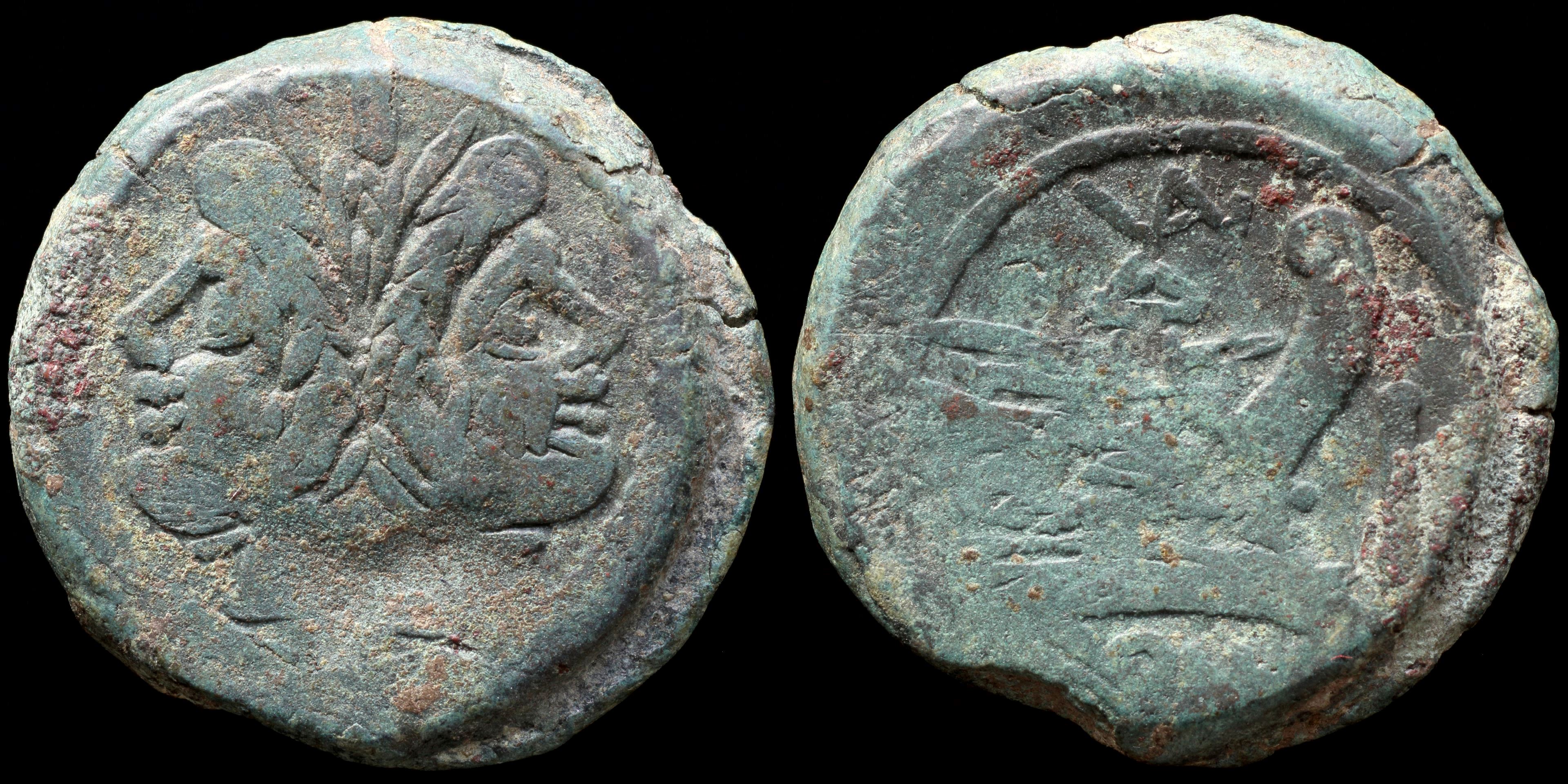During the Republic, the as featured the bust of Janus on the obverse, and the prow of a galley on the reverse.
Following the coinage reform of Augustus in 23 BC, the as was struck in reddish pure copper instead of bronze.
The as continued to be produced until the 3rd century AD. It was the lowest valued coin regularly issued during the Roman Empire.
The last as seems to have been produced by Aurelian between 270 and 275, and at the beginning of the reign of Diocletian.
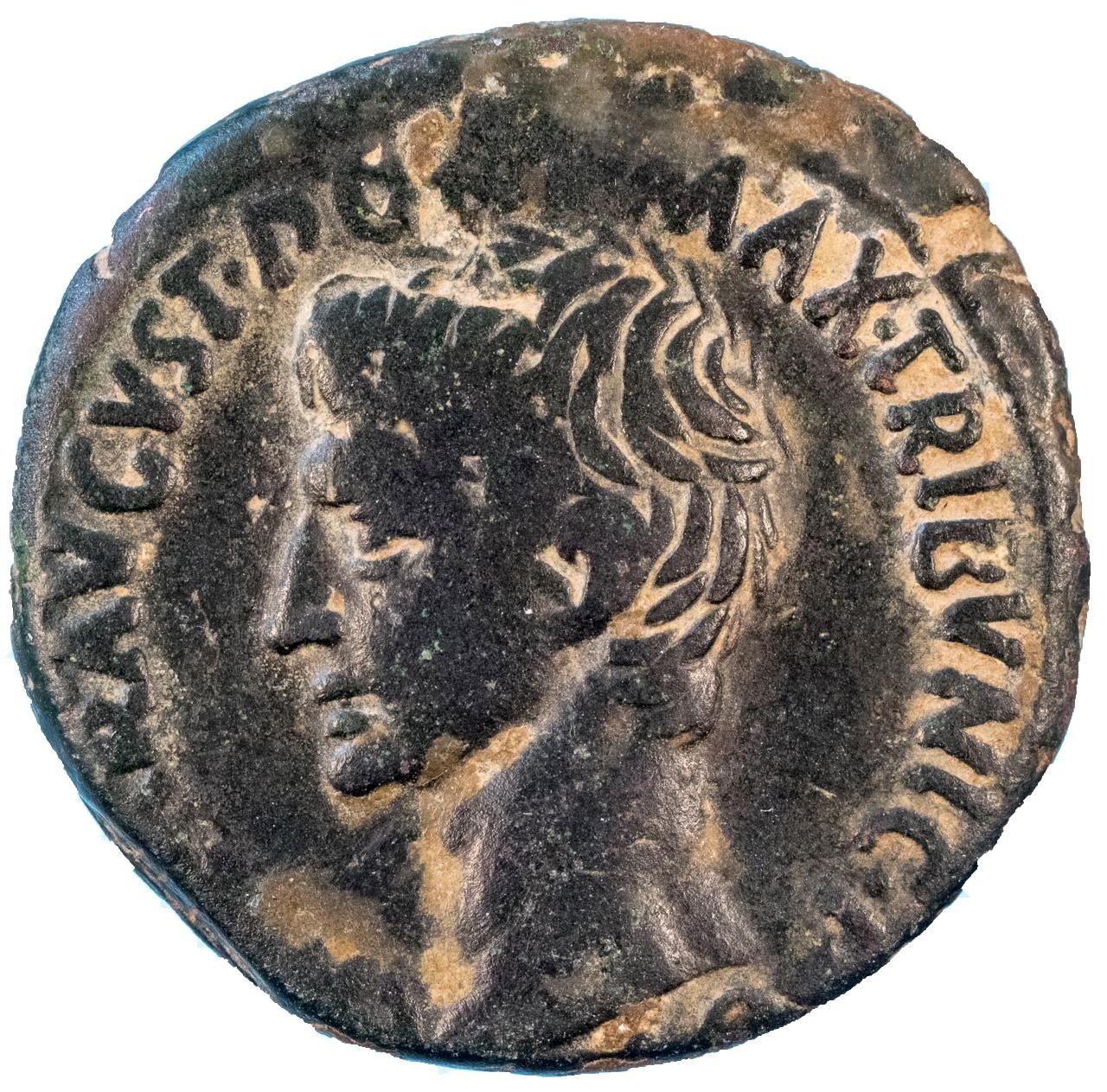
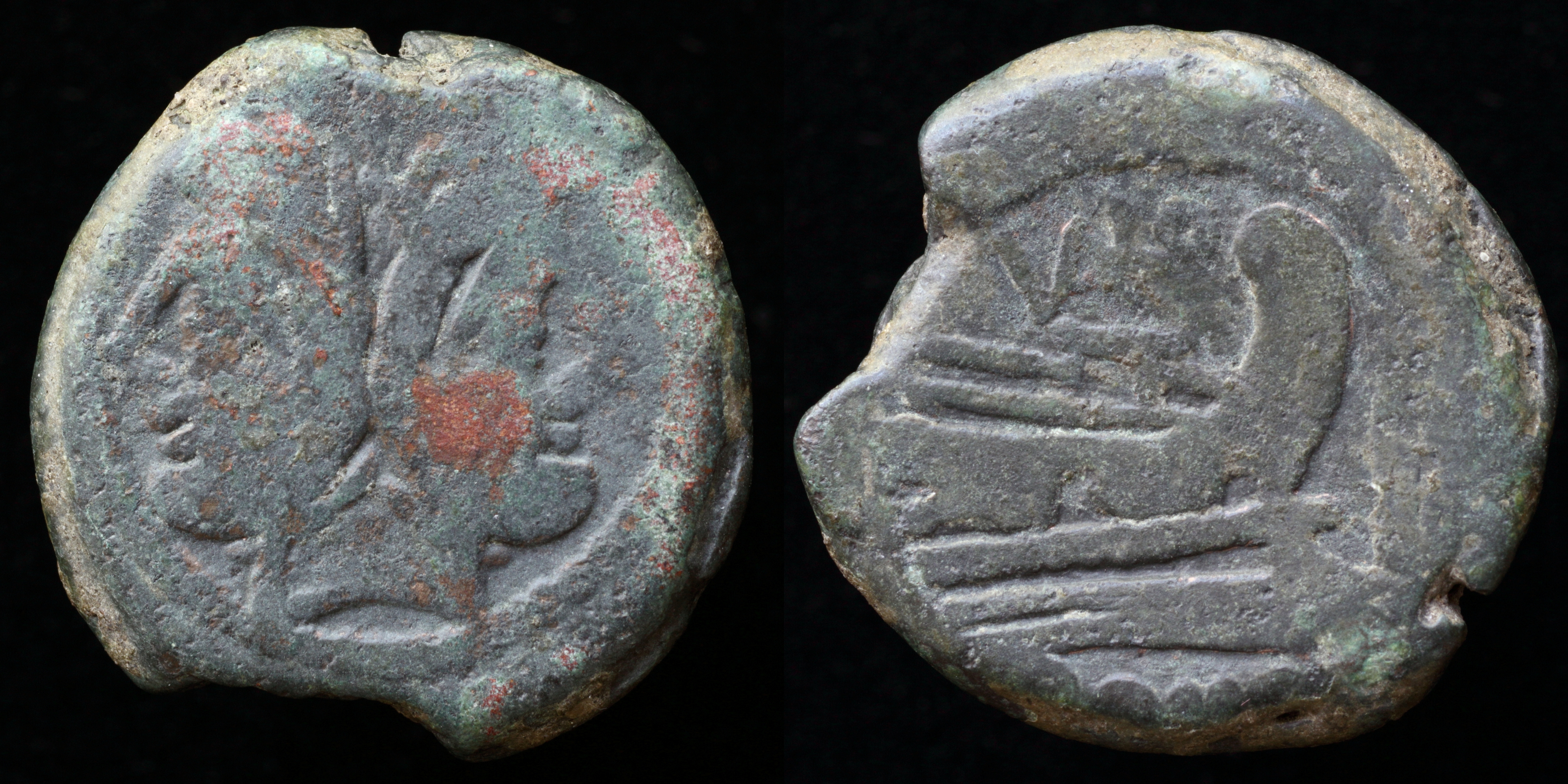
Reverse: Prow of galley right; (VAL) / I / ROMA
Die Orientation: -
Weight: 27.3 g
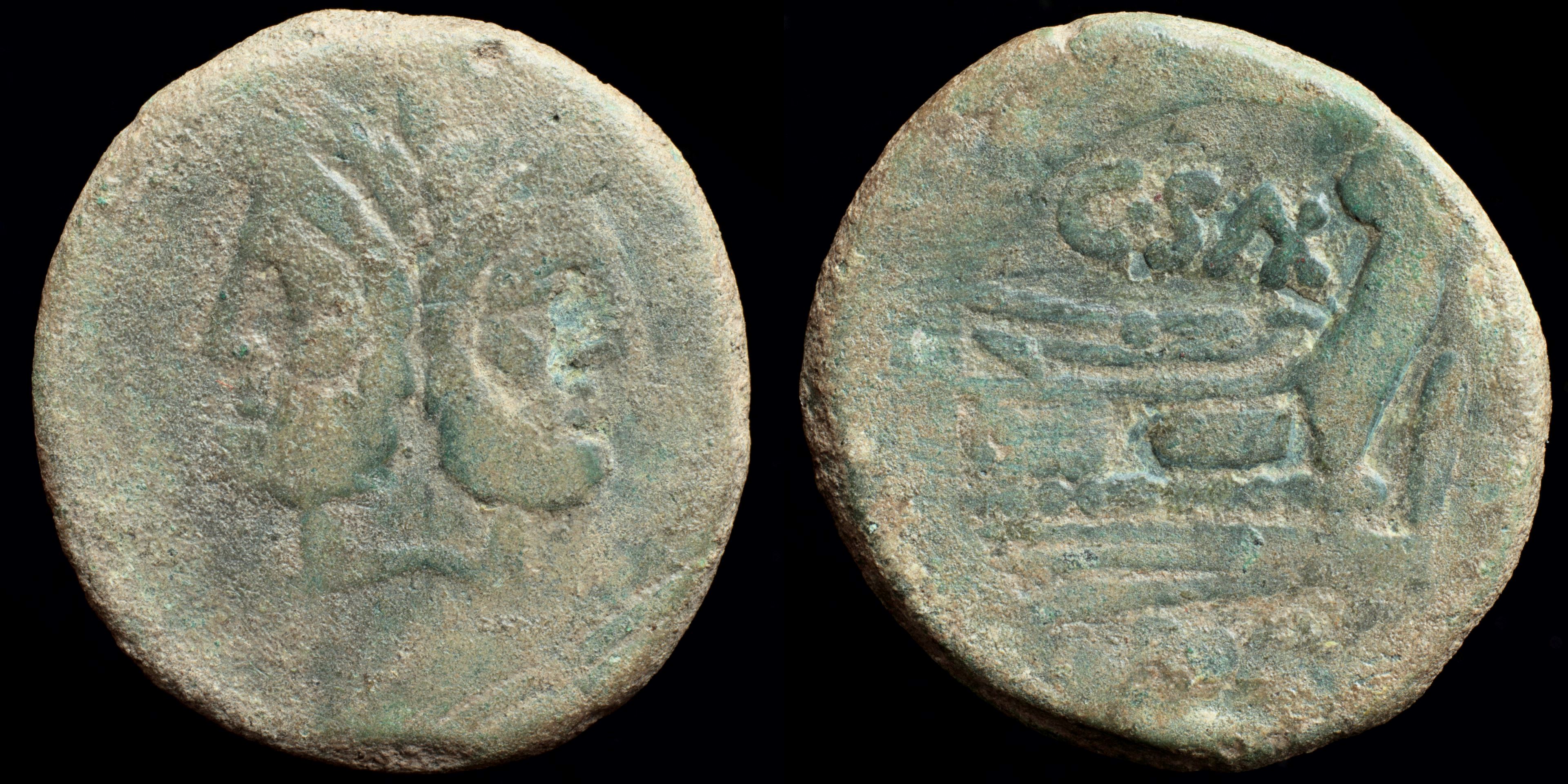
Reverse: prow of galley right C·S(AX) I ROMA
Die Orientation: -
Weight: 26.9 g
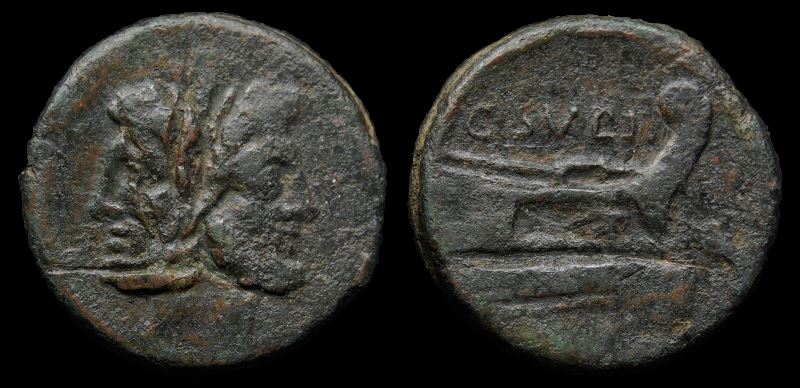
Reverse: Prow right; C•SVLPI above; palm-branch in right field; ROMA below.
Die Orientation: 0 H
Weight: 32.68 g
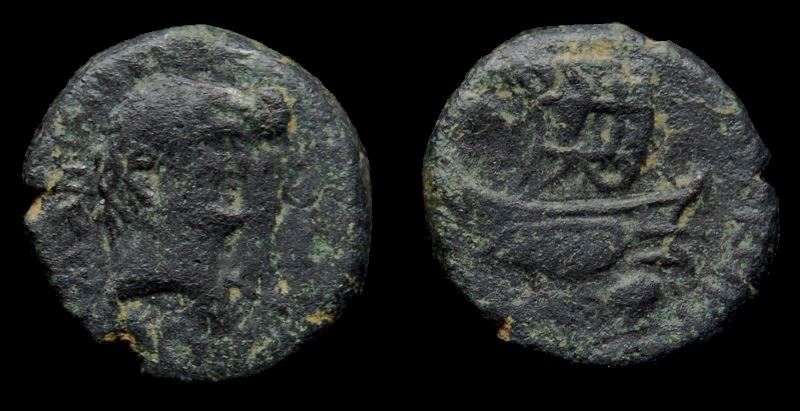
Reverse: M OPPIVS CAPITO PRO PR PRAEF CLASS F C - Galley right, below A.
Die Orientation: -
Weight: 3.69 g
"M. Oppius Capito was Antony’s senior naval officer, stationed at the main naval base at Piraeus. His coins are found distributed around central Greece, and were most likely struck at Piraeus. His coins are found in two series, a heavy and a light and it has been suggested that some were struck at Tarentum where part of Antony’s fleet was based during the joint action against Sextus Pompey in 37-36 BC"
"The coin illustrated here is an as, marked A, with jugate portraits of Antony and Octavia on the obverse, a galley under sail on the reverse. It falls into the "light" series, perhaps issued a year after the first release of the coins, on a lighter standard, in the name of Antony and Oppius Capito. Although this experimental coinage was short-lived and very rare today, it is interesting to note that the great currency reform started by Octavian, after he had taken the name Augustus and become the first Emperor of Rome, resulted in a bronze coinage using exactly the same denominations as Anthony's fleet issues."
Provenance: Private purchase (August 2017).
.png)
Reverse: M OPPIVS CAPITO PRO PR PRAEF CLASS F C - Galley right; A below.
Die Orientation: 11 H
Weight: 6.69 g
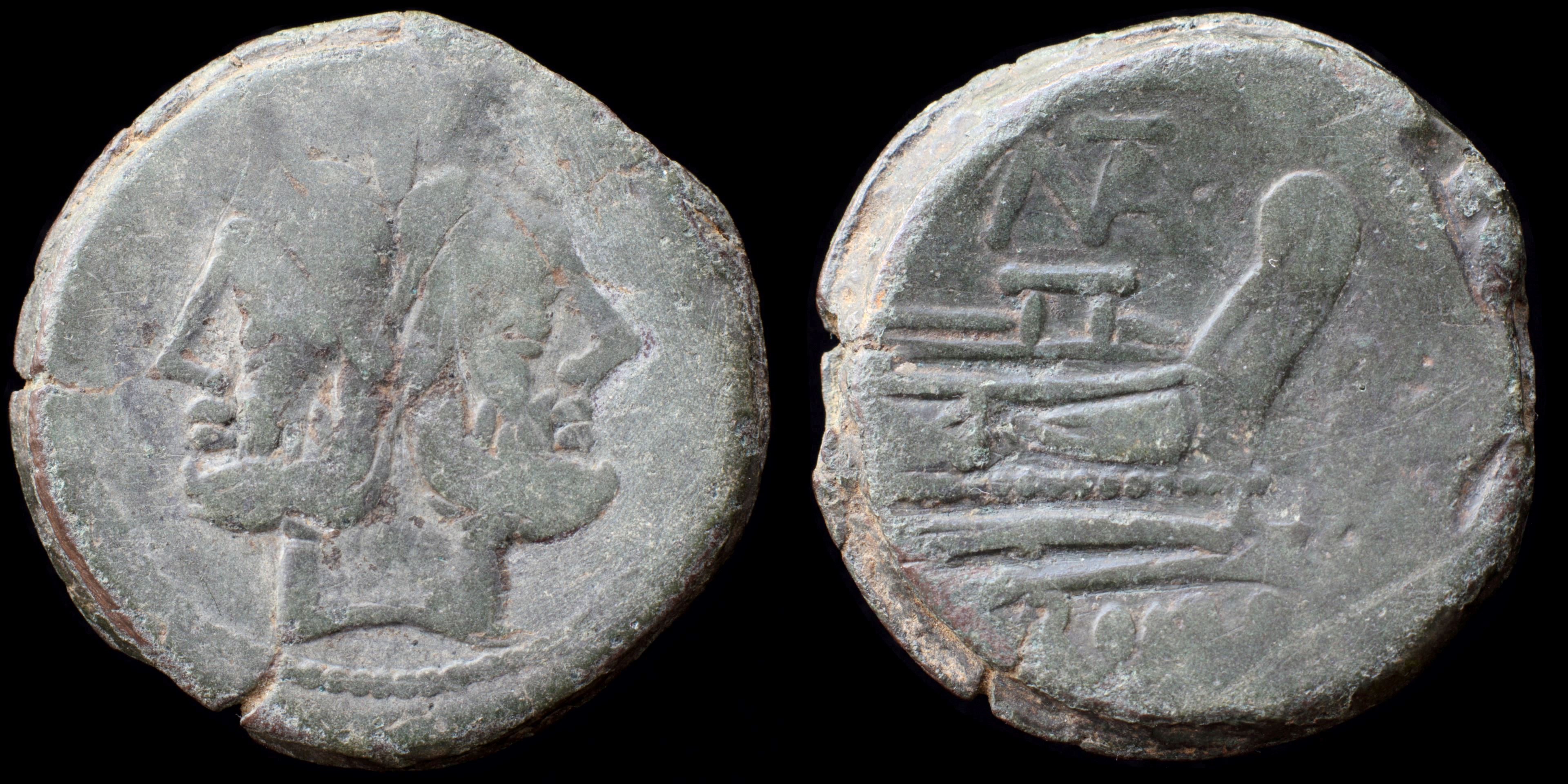
Reverse: prow of galley right; (MAT) / I / ROMA
Die Orientation: -
Weight: 27.8 g
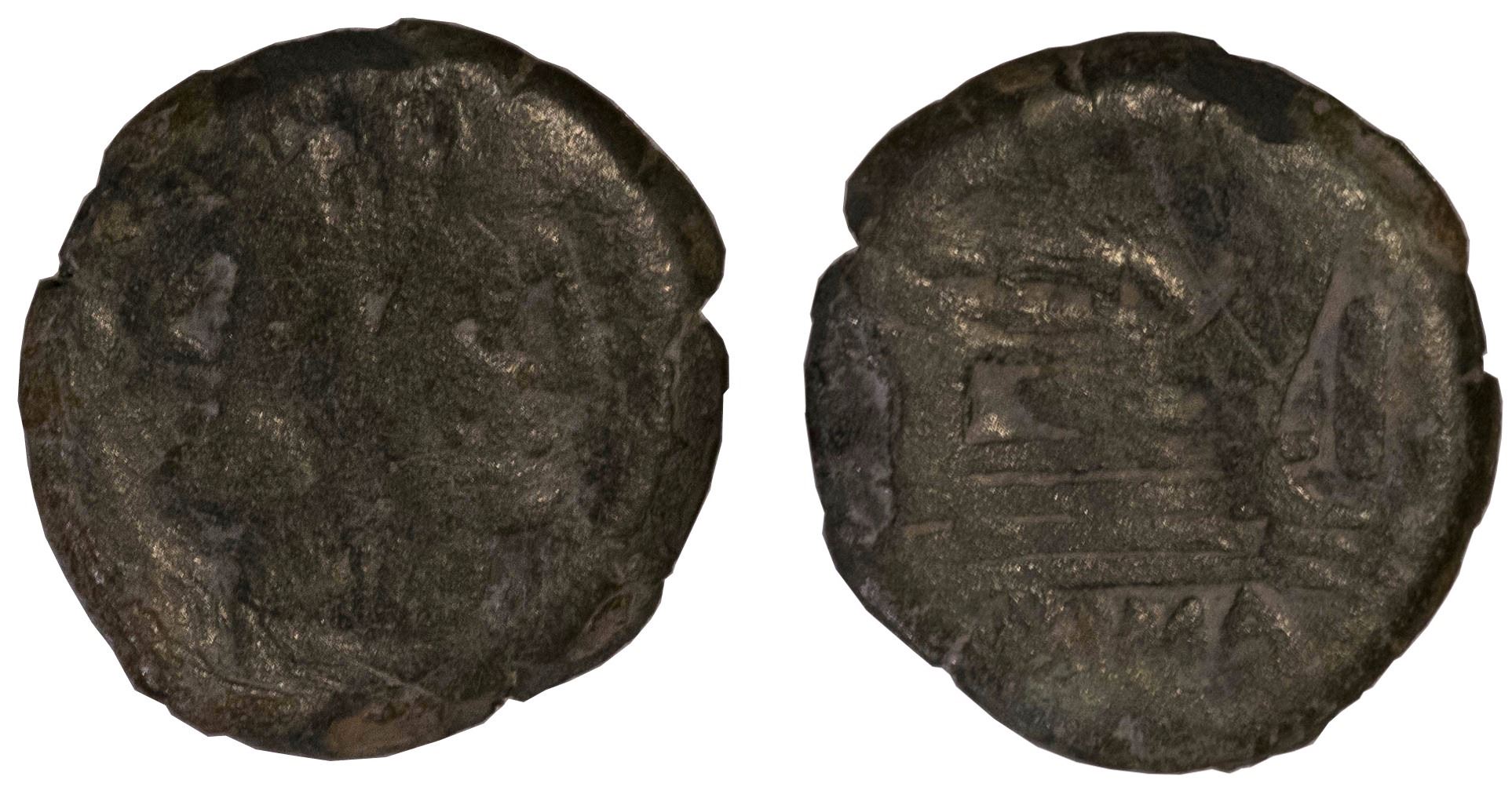
Reverse: Prow of Galley, right. OPEI above, I in right field. ROMA in exergue
Die Orientation: 7 H
Weight: 15.3 g
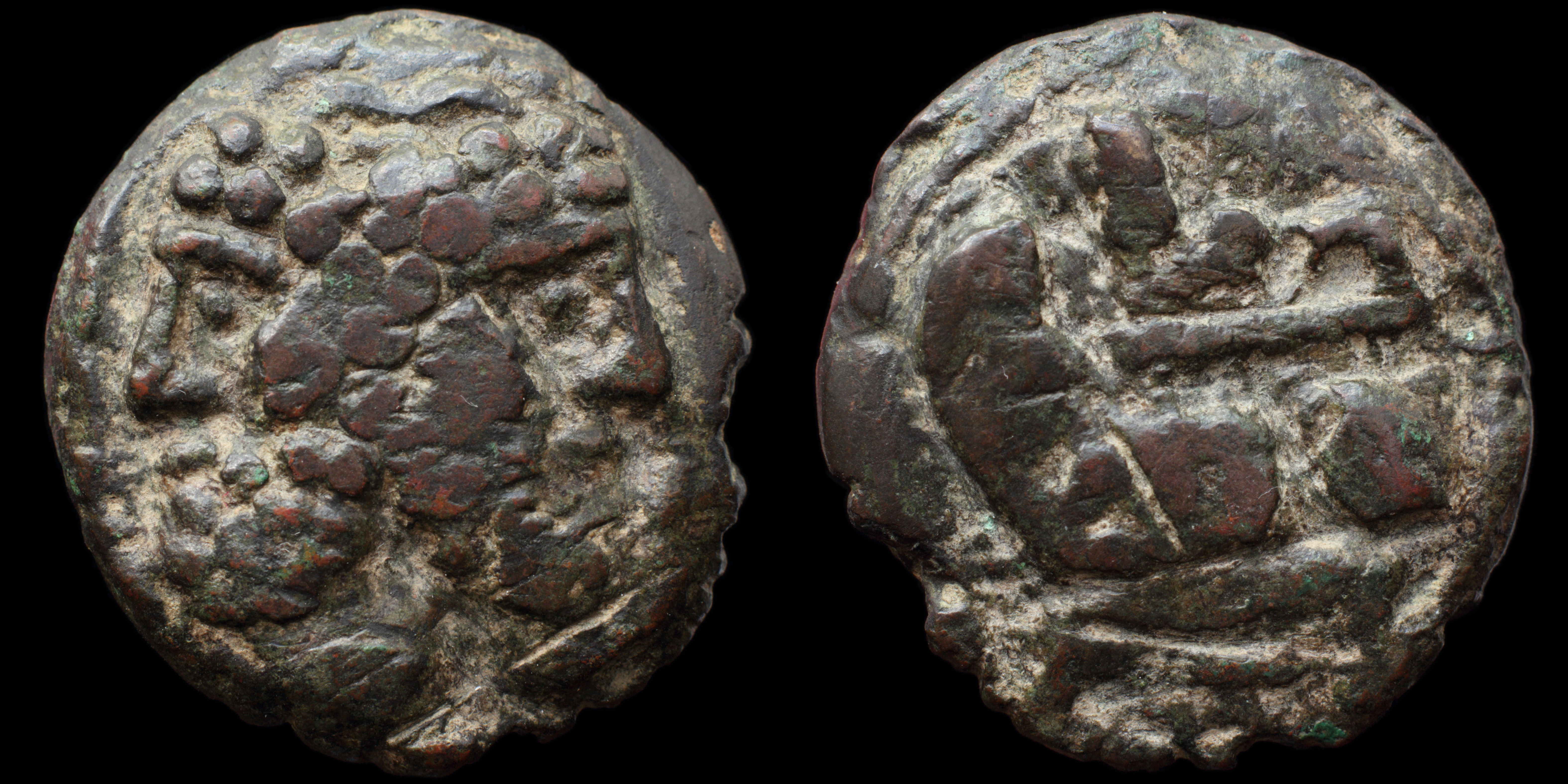
Reverse: prow of galley left; I
Die Orientation: -
Weight: 52.9 g
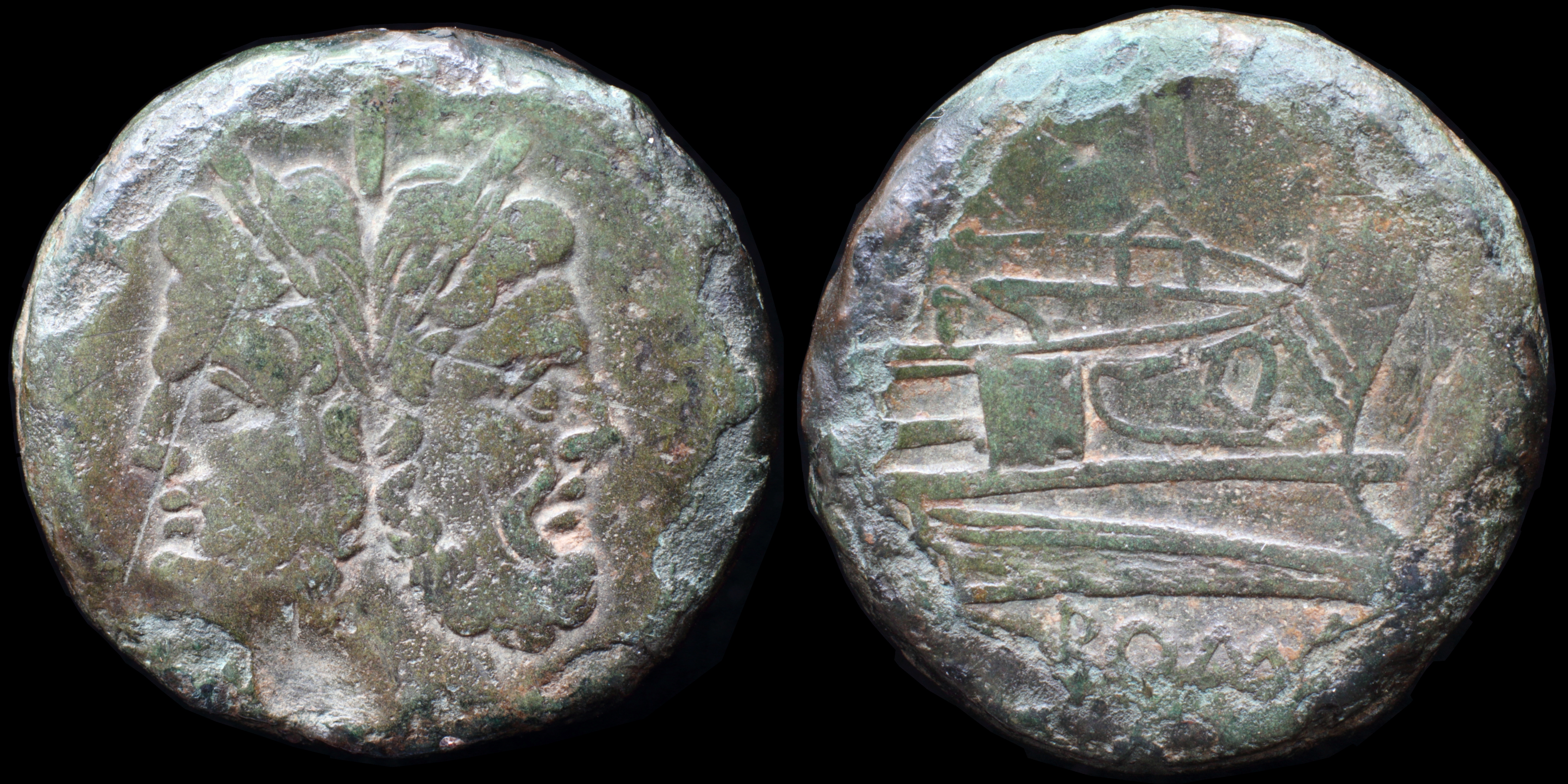
Reverse: Prow of galley right I H ROMA
Die Orientation: -
Weight: 31.7 g
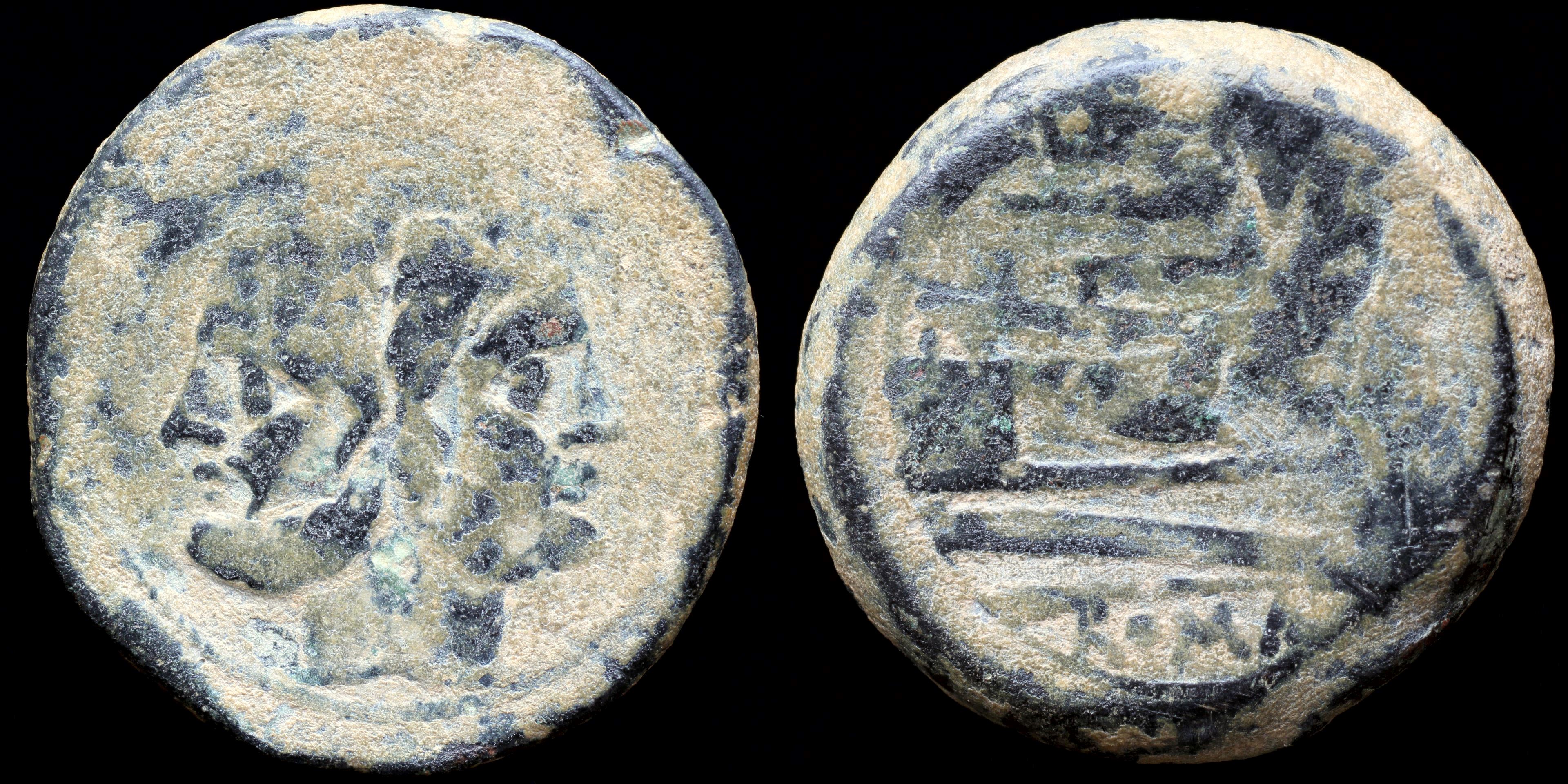
Reverse: Prow of galley right, club above I ROMA
Die Orientation: -
Weight: 44.2 g
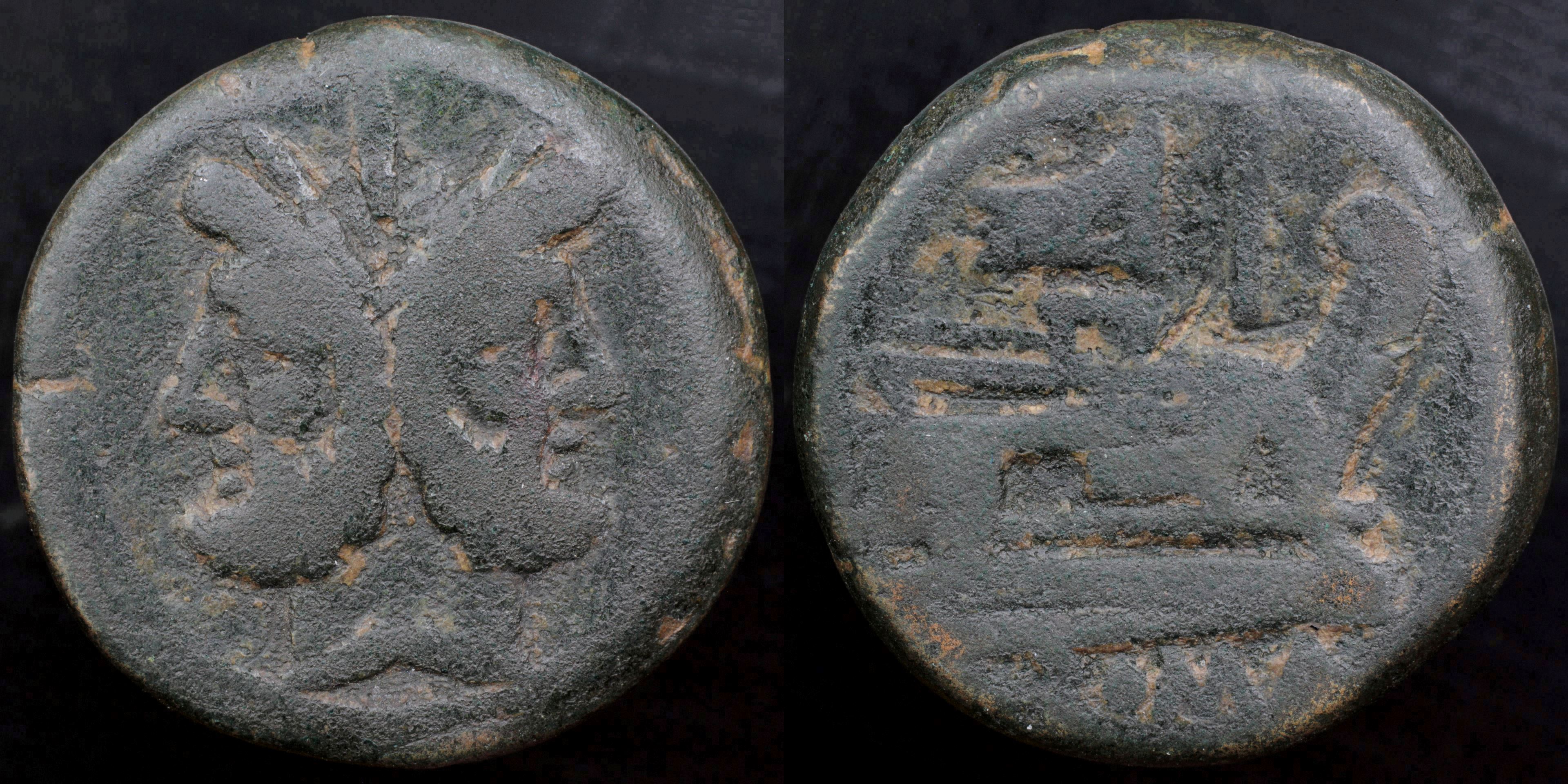
Reverse: prow of galley right, Rostrum Tridens above I ROMA
Die Orientation: -
Weight: 28.99 g
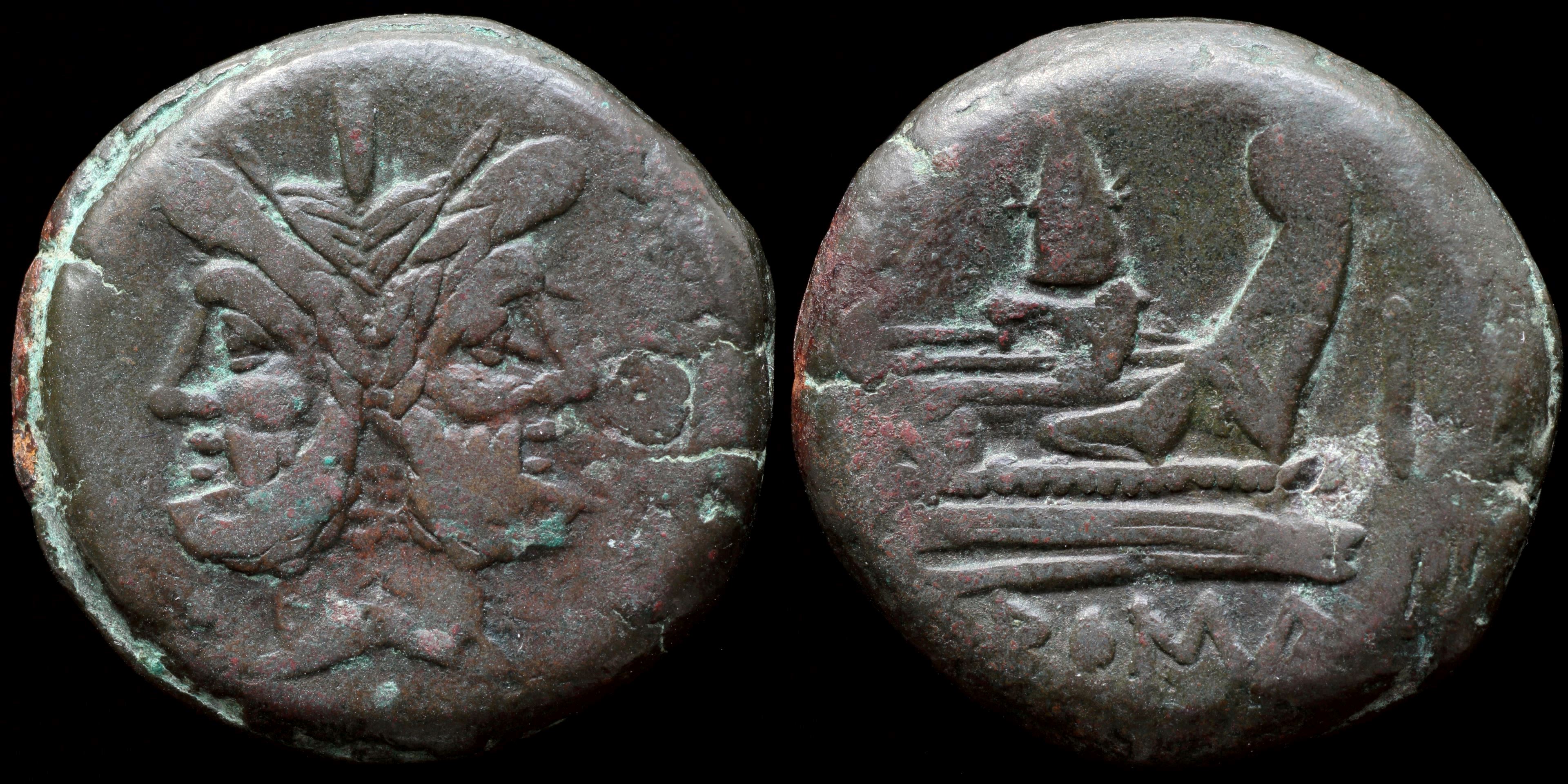
Reverse: prow of galley right, meta above I ROMA
Die Orientation: -
Weight: 43.4 g
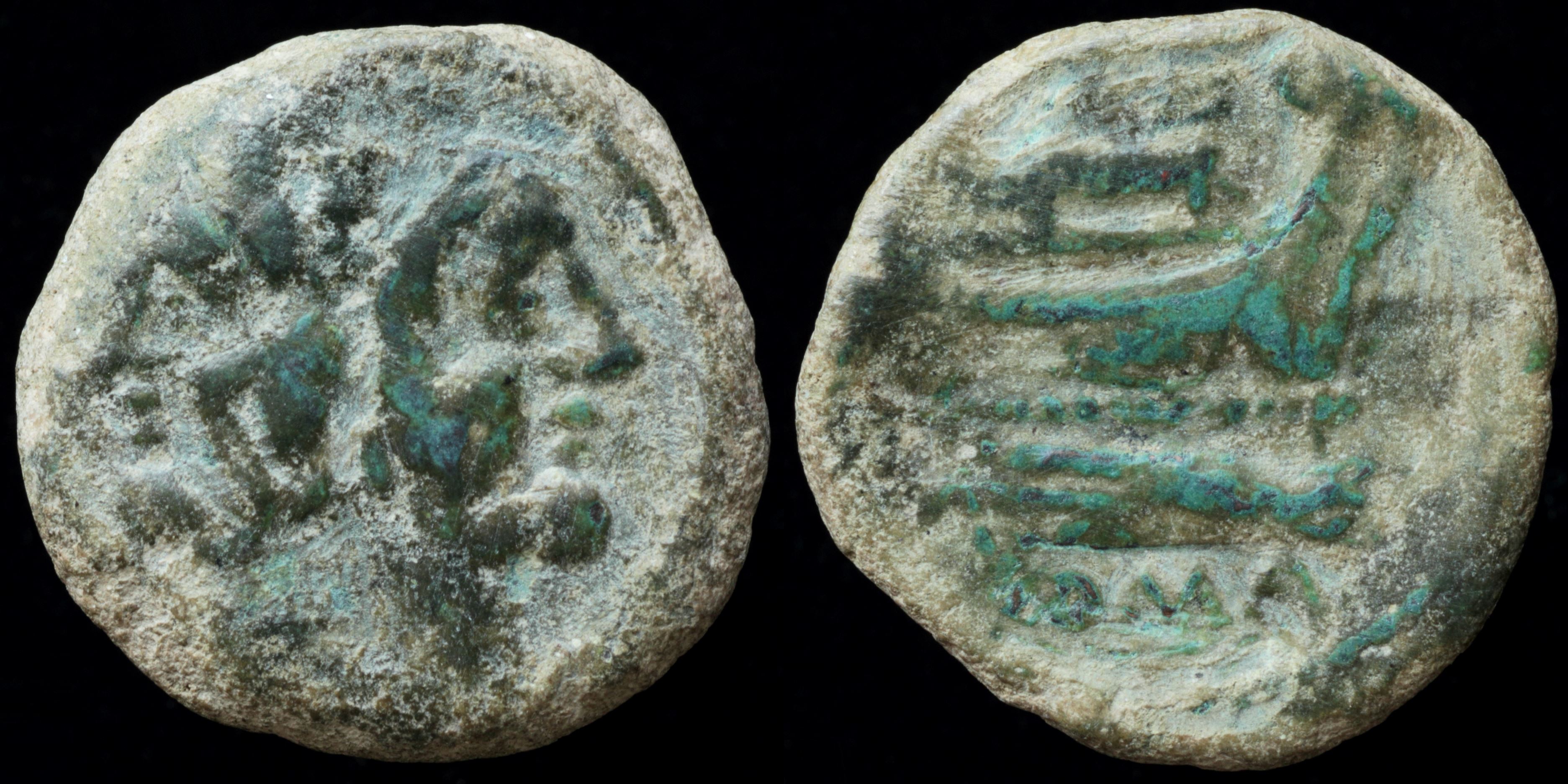
Reverse: prow of galley right I ROMA
Die Orientation: -
Weight: 20 g
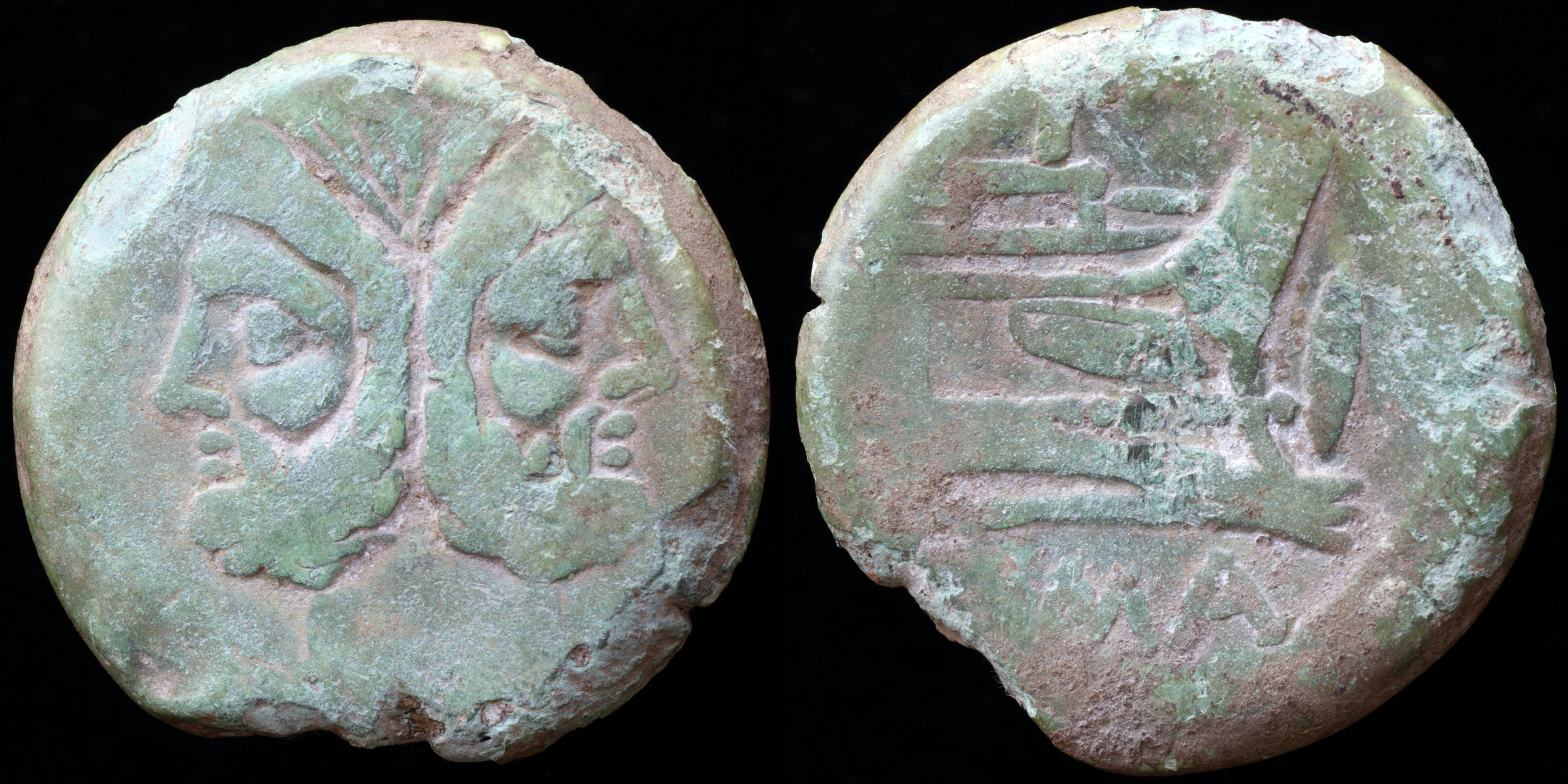
Reverse: prow of galley right; (PT) / I / ROMA
Die Orientation: -
Weight: 23.1 g
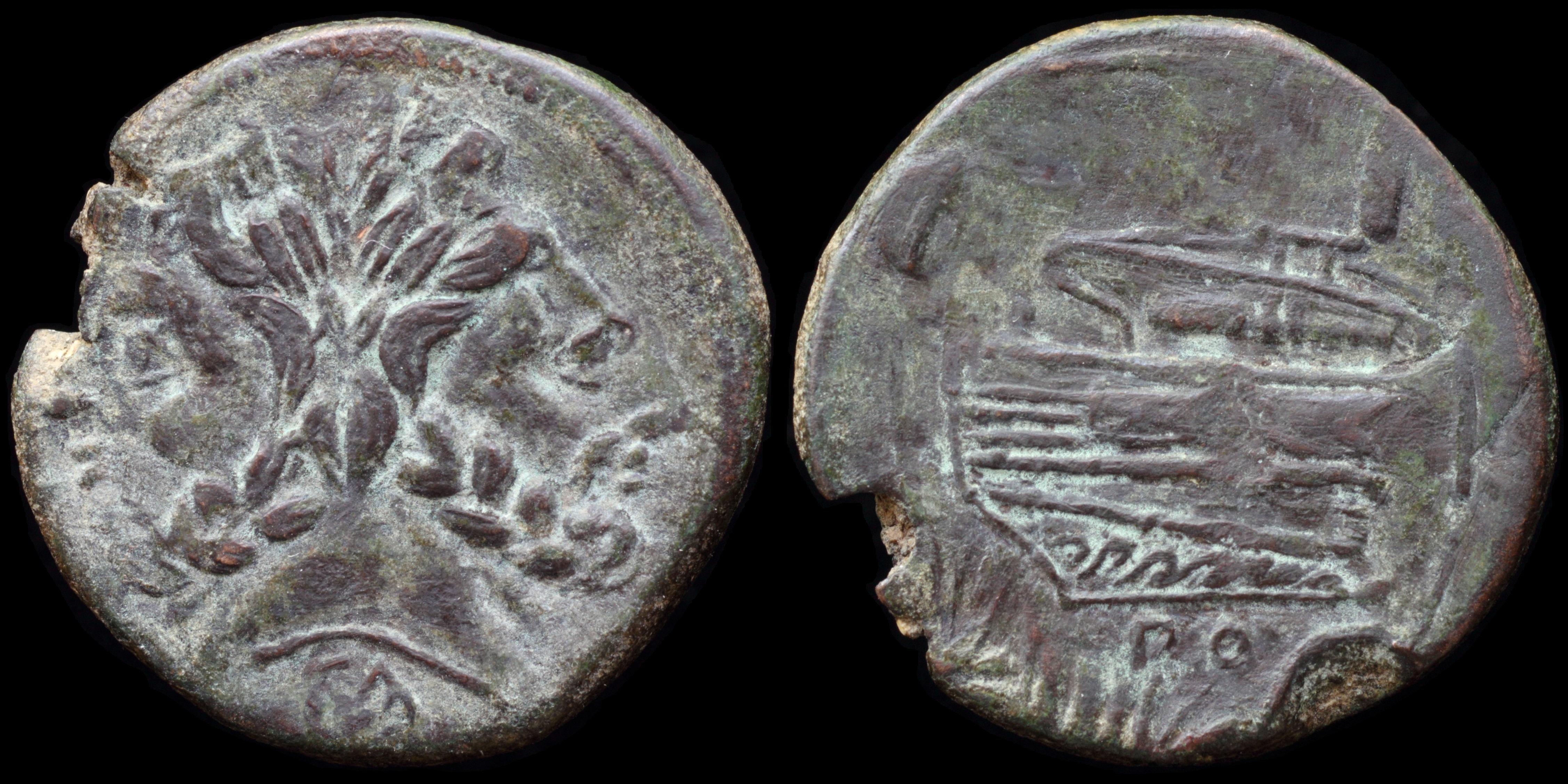
Reverse: prow of galley right, fighting platform decorated with club; I / CA / ROMA
Die Orientation: -
Weight: 10.27 g
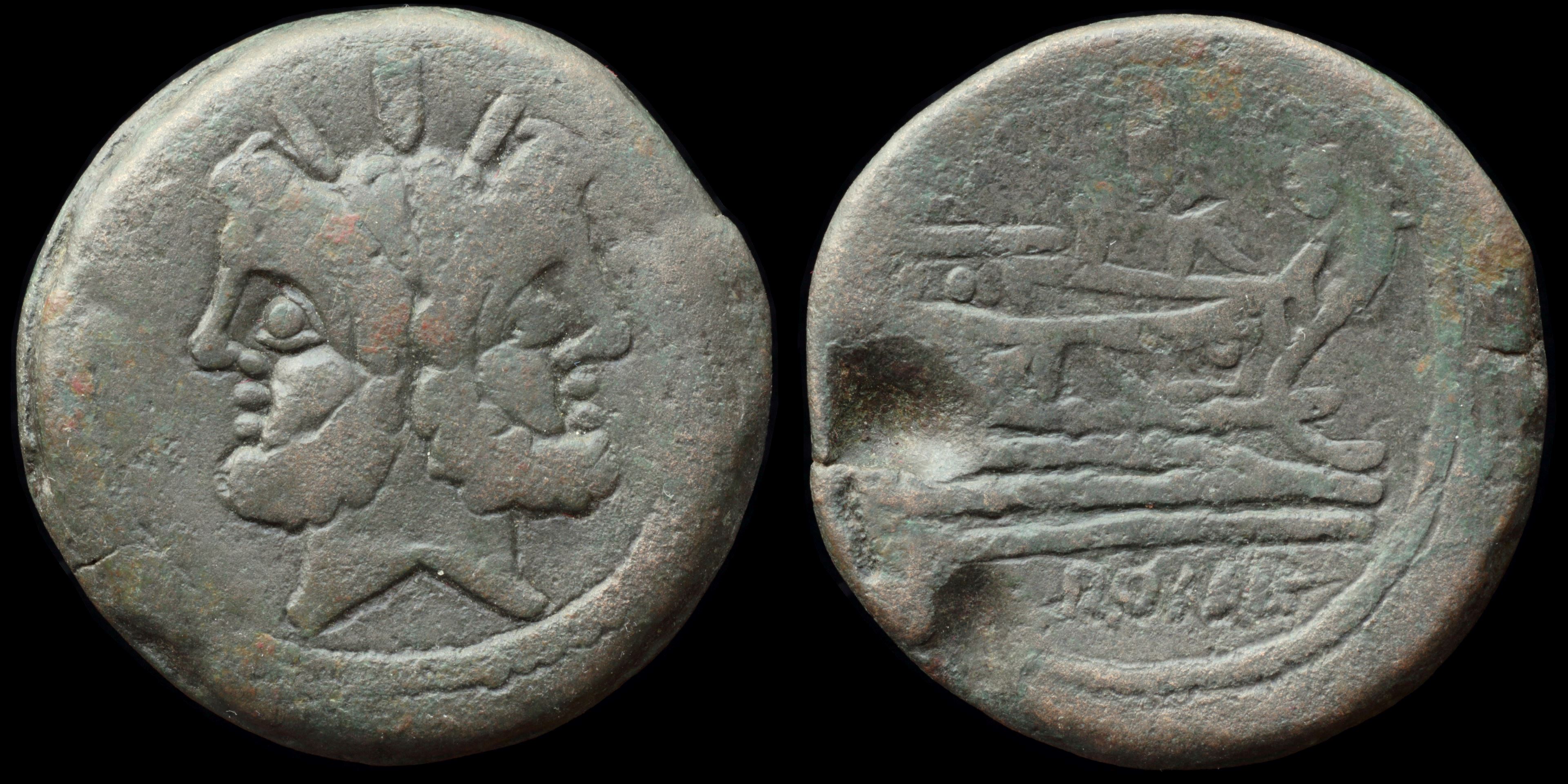
Reverse: prow of galley right; I / ROMA
Die Orientation: -
Weight: 42.1 g
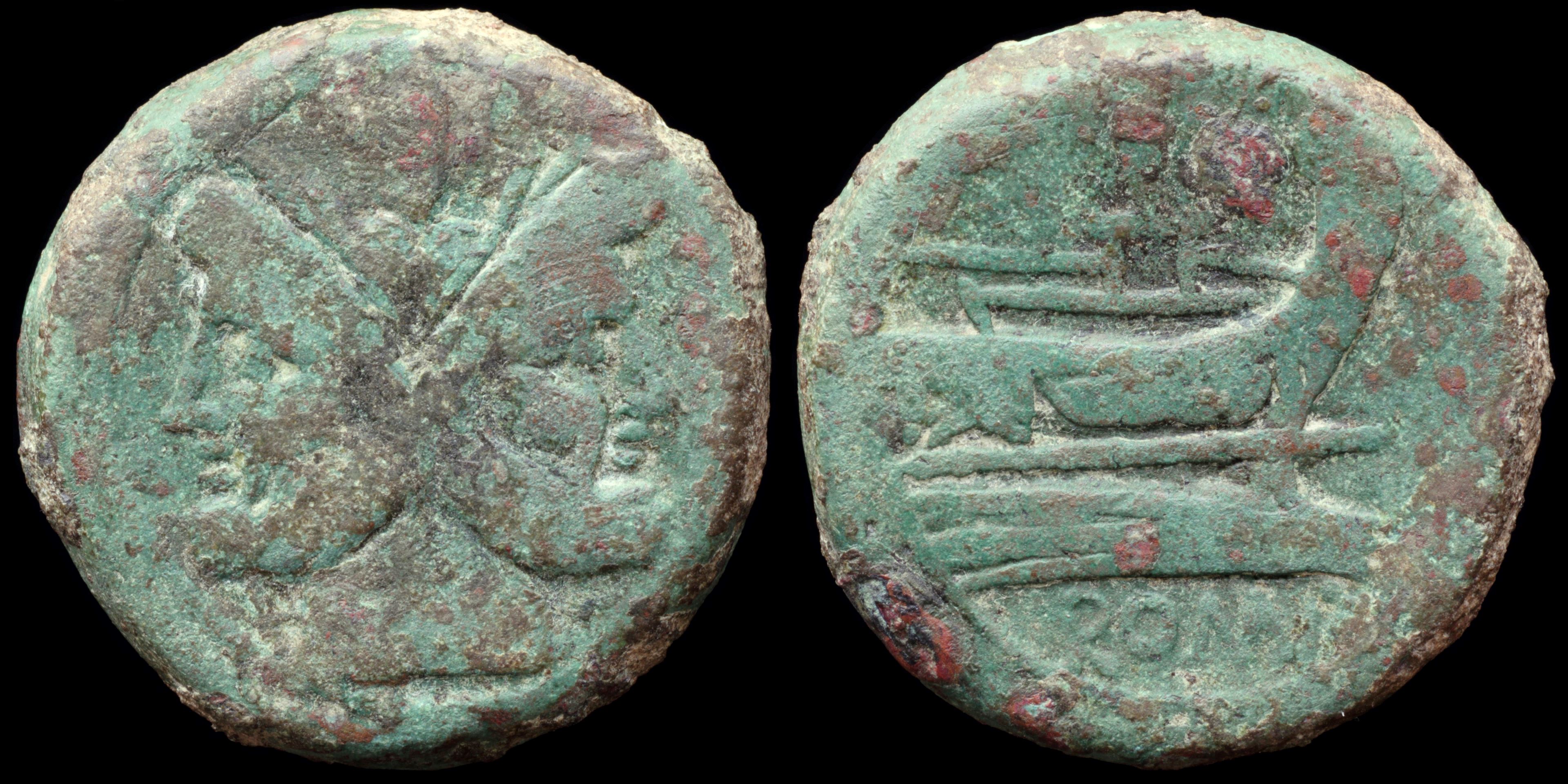
Reverse: prow of galley right; I / ROMA
Die Orientation: -
Weight: 39.5 g
.jpg)
Reverse: prow of galley right, butterfly on vine branch with leaf and grape bunch above; I / ROMA
Die Orientation: -
Weight: 26.2 g
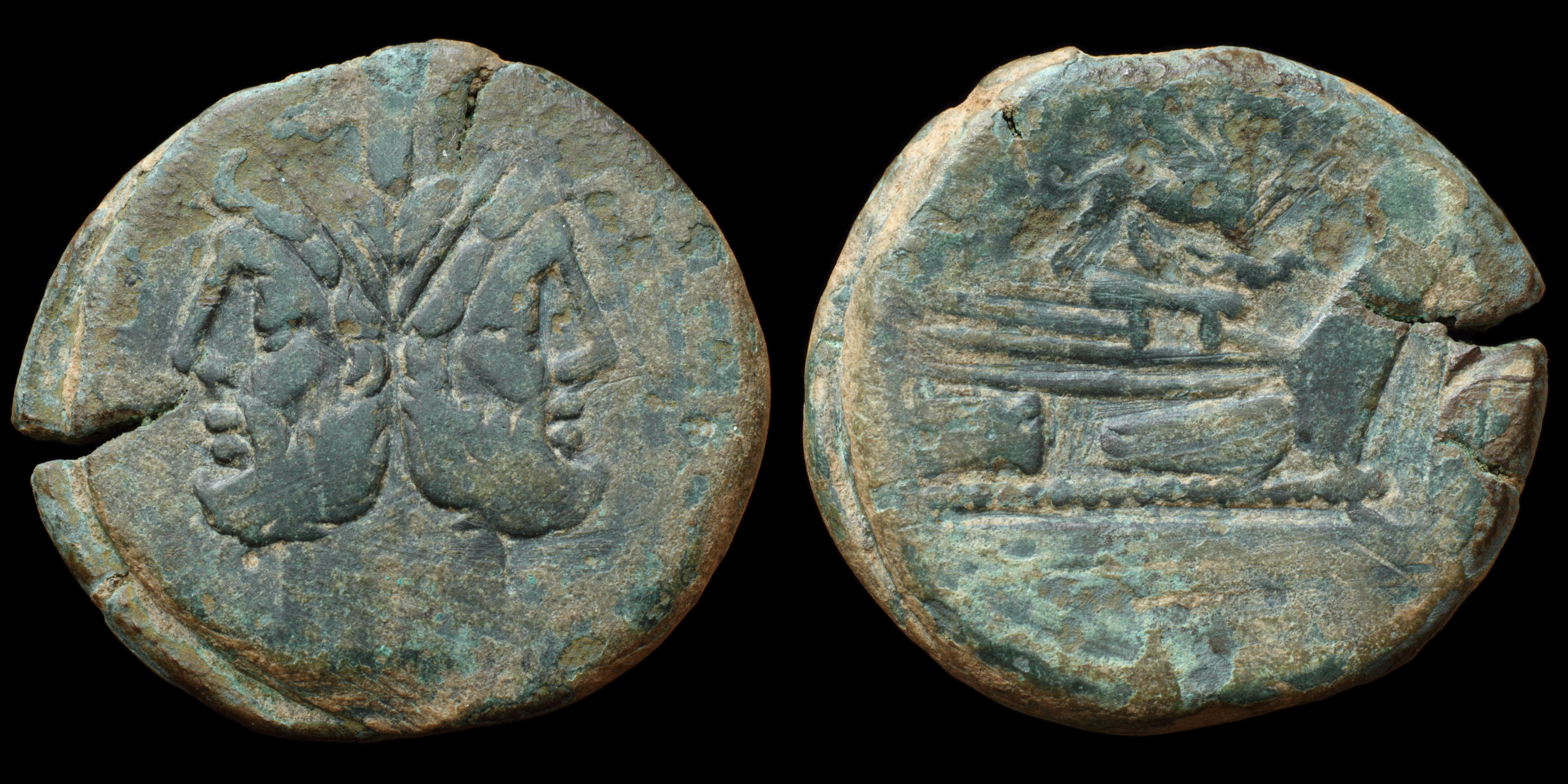
Reverse: prow of galley right, above gryphon trampling on head of hare; I / ROMA
Die Orientation: -
Weight: 24.8 g
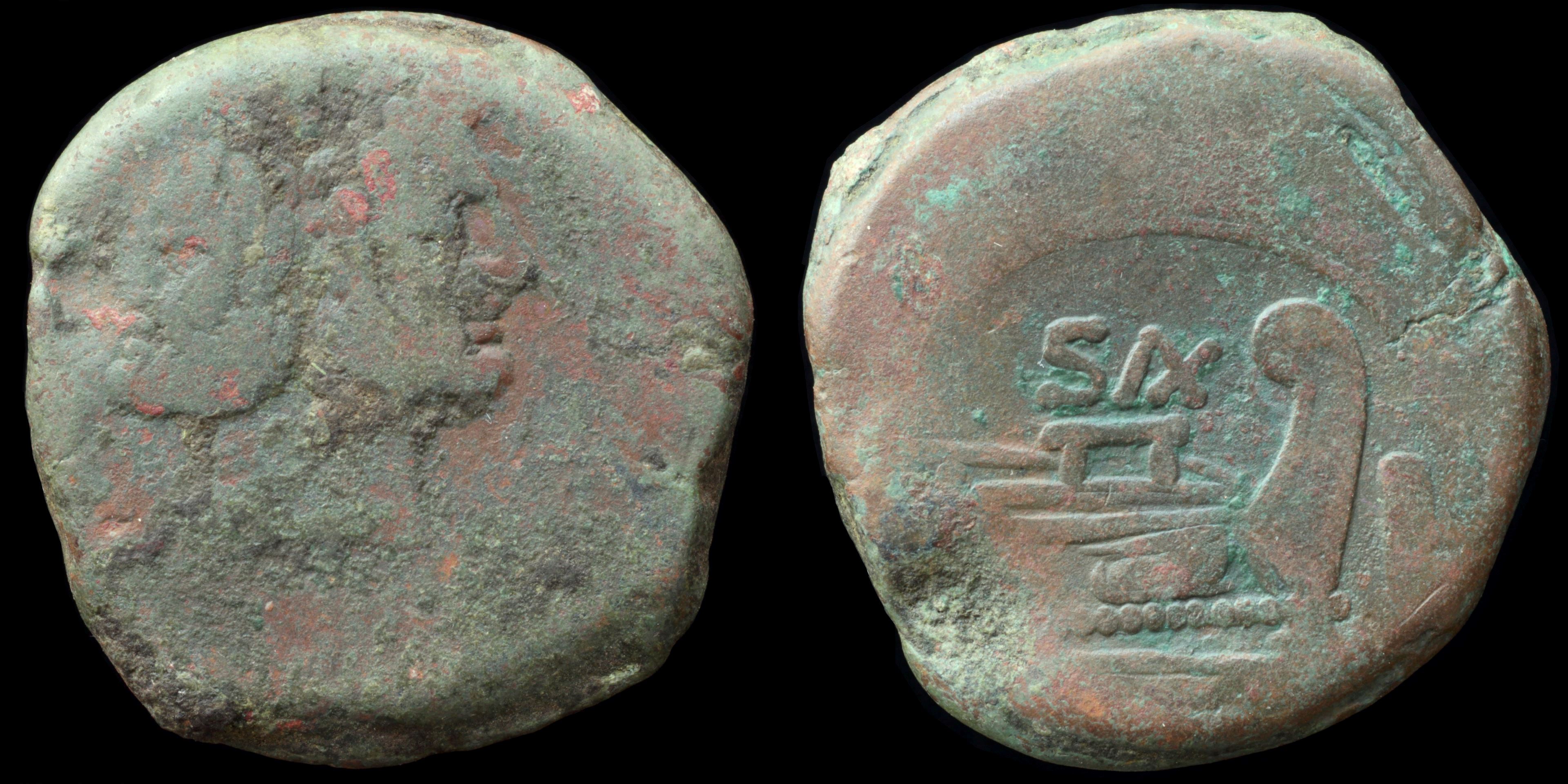
Reverse: prow of galley right; S(AX) / I / ROMA
Die Orientation: -
Weight: 31.5 g

